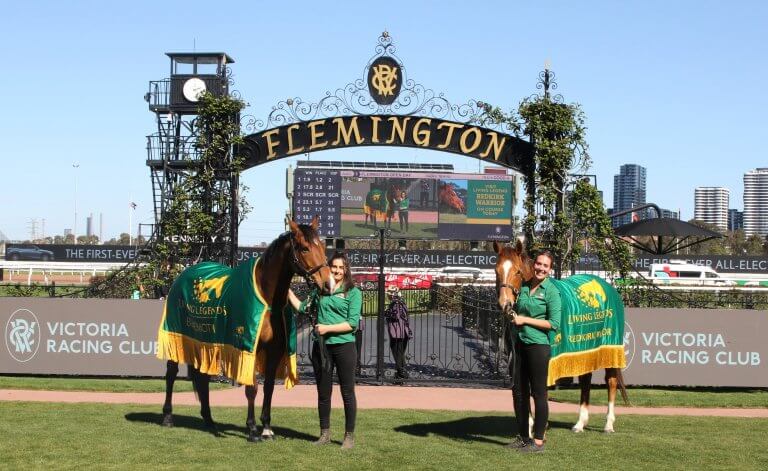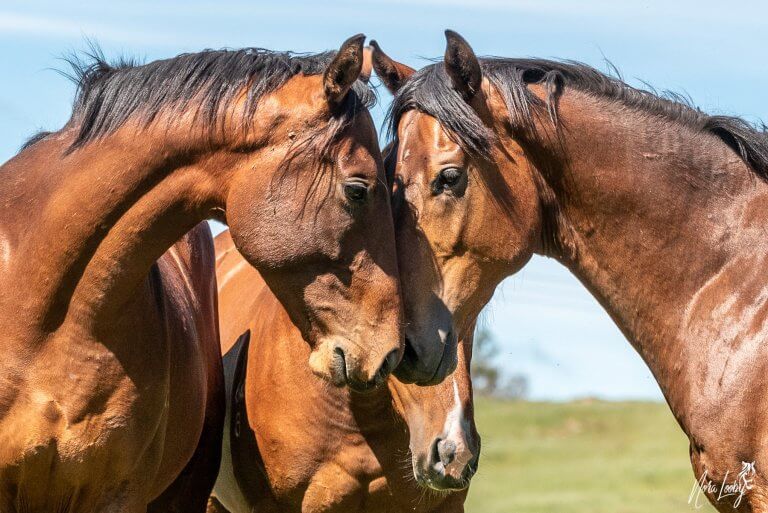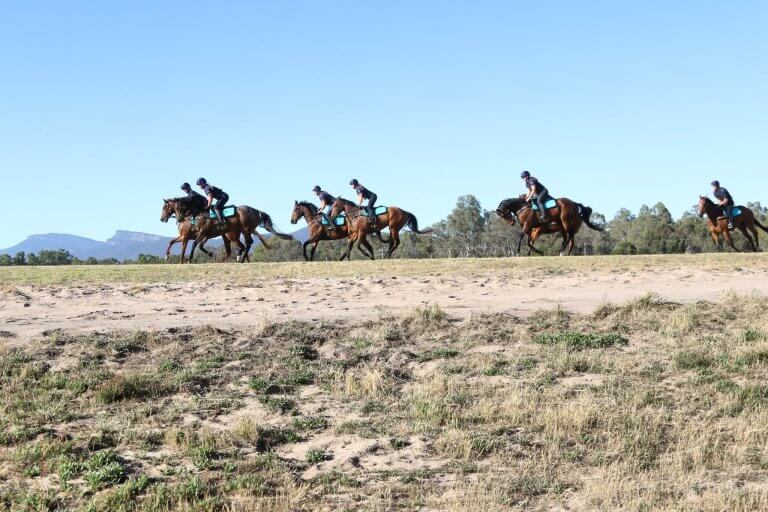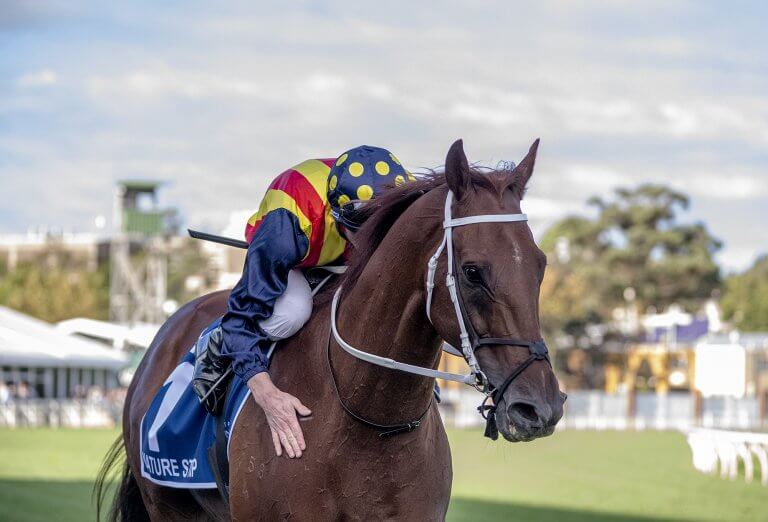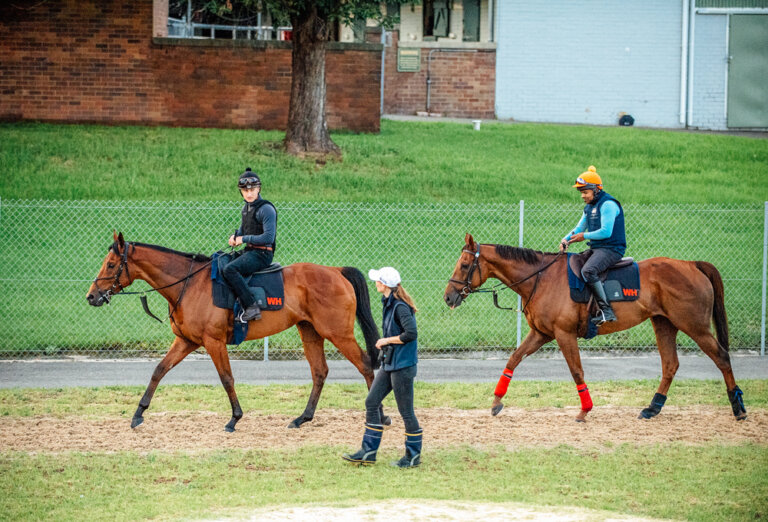He lacked ability on the track and wasn’t cut out for a high-intensity career in the equestrian world, however Thoroughbred Blue Hussler is proving that off-the-track horses have the potential to excel at many other vocations.

A career with Riding for the Disabled Victoria is not necessarily the first option that springs to mind when considering new paths for off-the-track horses, but that’s exactly where the road has led for 11-year-old gelding Blue Hussler.
By Hussonet (USA) out of Blue Mermaid (Bluebird), ‘Blue’ retired from the track in 2015 with just $275 to his name, and over the next six years was unsuccessful in finding his next calling. Coming to the attention of Racing Victoria’s emergency aid program last year due to being in very poor condition, Blue was taken into RV’s care and placed directly with RV Acknowledged Retrainer, Louise Abey.
The long road to rehabilitation began and, despite his poor body condition, Blue’s sweet nature shone through from the get-go. Lou explains that Blue spent far longer with her than the average OTT horse and the road to recovery wasn’t straightforward. When Blue was finally well enough to head out into a paddock, he felt a little too good and injured his knee. Following x-rays, it was found that he had a slab fracture that would require five months rehab – and along the way he also suffered a severe bout of colic. Despite the adversity he faced, Lou says the horse was simply a “nice person” to have around and she and team became very fond of him.
During his rehab, Blue was initially confined to a smaller yard for eight weeks with controlled daily exercise via hand walking. “This was where we all fell a bit more in love with him and his beautiful, gentle disposition,” explains Lou. “A lot of horses don’t cope well with rehab and being couped up, but Blue was just amazing. Everyone gave him pats all the time and he loved being part of everything; he just loves people.”
After eight weeks, he was able to move to a larger yard, and then eventually it was back to paddock life and his re-training process could resume under saddle. At this point, having seen the x-rays, Lou and Racing Victoria knew that despite Blue being sound and rideable, heavy work would not be in his best interest.

Taking his situation into account, Blue was accepted into Racing Victoria’s RESET program, designed for horses that need extra help finding the right home. Finally well and ready to begin the retraining process, Lou explains that Blue was quite green to begin with – but it didn’t take long for him to get into the swing of things. “I don’t think he’d had any riding since he raced… he was really green,” says Lou. “But once he worked out his drill, we realised how quiet he was and thought he might be a prospect for the RDA.”
Lou enquired about what sort of tests Blue would need to pass in order to be accepted into the RDA, and it wasn’t long before she was trying out everything from crawling through his legs, to walking over tarps and ensuring he could happily handle unbalanced riders. He passed with flying colours.
The right attributes
RDA Victoria President Tanya Twaits explains that the organisation is desperately in need of suitable horses for its many centres across the state – and any breed has the potential to be suited, with RDAV accepting small ponies through to horses of about 16.2 hands. “The height limit is because we have side walkers who may need to be able to reach up and hold the rider,” she explains, adding that successful candidates usually range in age from eight to 20 years old.

Temperament-wise, Tanya says RDA horses have got to be “unflappable” and able to cope with unexpected sounds and movements, and in terms of riding, they need to be sound. “They need to be sure-footed and able bodied. They won’t be doing high intensity work, but they need to be sound to handle different weights and riders who may be unbalanced.
“They also have to be responsive; they have to stop when we need them to stop, and they have to walk forward when we need them to go. Not all horses are used to having someone either side of them, so they have to be comfortable with that as well.”
Finally, Tanya explains that an RDA horse needs to possess a kind and friendly nature: “A lot of the participants like to give the horse a carrot, cuddle, pat or groom. They form that bond with a horse and it’s a really important bond; they’ve got to have that trust.”

